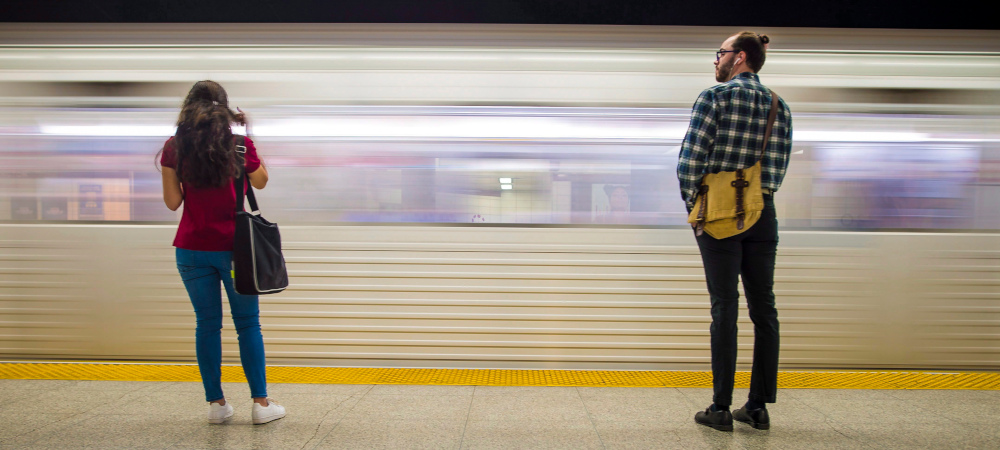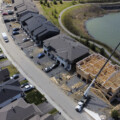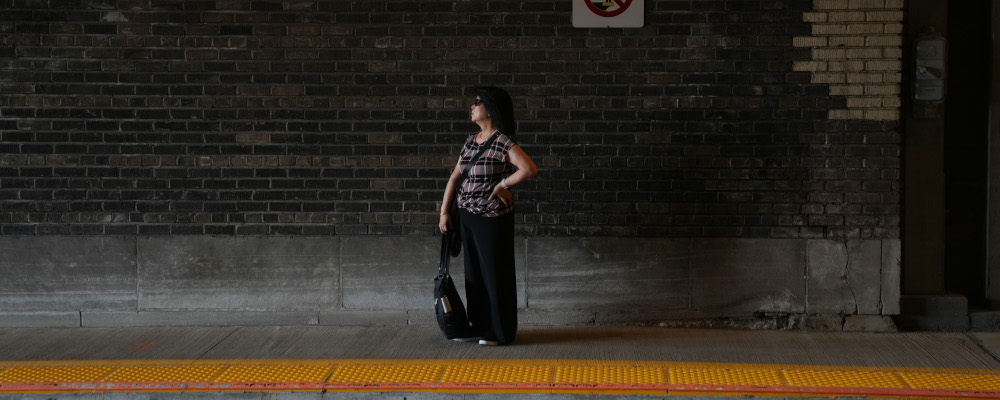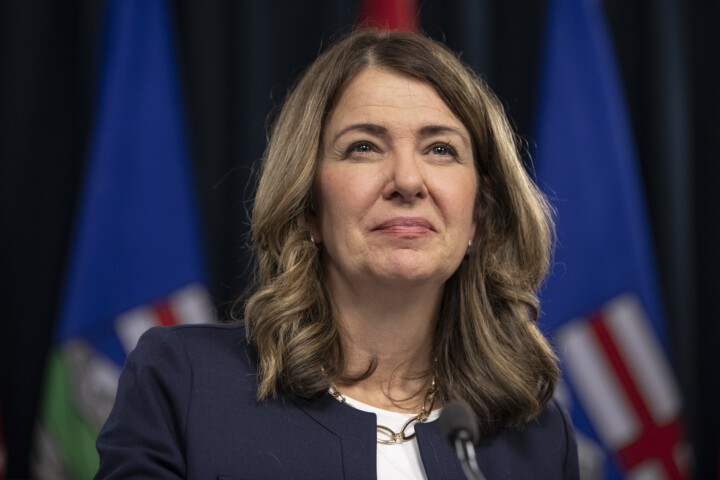The Eglinton Crosstown is, without a doubt, the biggest story in Canadian transit. The Toronto project—which has been under construction in one shape or another since the early 2010s—remains unopened after more than a dozen years and without an opening date in sight. It took less time to build the Roman Colosseum, the Hoover Dam, or the Panama Canal.
But is this inevitable? It seems these days that every transit project in Canada is late and over budget. Add on top of that a large and growing deficit of housing units and it’s easy for a layperson to wonder: “Can Canada build anything anymore?” and “Why does it all cost so darn much?”
It wasn’t always this way. There are examples to emulate. If you were walking down Cambie Street in Vancouver in 2007, you’d have been greeted with a few things: punishing traffic, signs of Vancouver’s coming 2010 Olympic Games, and a giant trench taking up half the street surrounded by throngs of equipment. But the disruption was worth it. Vancouver’s “Canada Line” was being built—the third rapid transit line the region had constructed since just the 1980s.
The Canada Line started construction in late 2005 and was ready months in advance of the 2010 Winter Olympics five years later—early and under budget. In many ways, Vancouver’s Canada Line is comparable to Toronto’s Crosstown: both projects are roughly 19-kilometre rail lines with roughly half of their routes tunnelled and half above ground. And while the Crosstown does have to pass under Toronto’s subway twice, the Canada Line has two major water crossings both over the Fraser River and under False Creek, as well as a crossing with the existing downtown Vancouver SkyTrain tunnel.

Looking at Toronto’s 12-plus-year struggle with the Eglinton Crosstown, it’s nothing short of remarkable that only a little more than a decade ago another large Canadian city with almost no experience building subways managed to actually build one in less than four years.
What’s even more surprising is that the Canada Line came in at a cost of less than $3 billion in today’s money—much less than the Crosstown which has already cost around a whopping $10 billion and could be nearing $15 billion. So the Crosstown could cost five times more than its B.C. counterpart, even though the Canada Line, unlike the Crosstown, is a true subway, with elevated and underground segments.
How is this possible? Where did things go off the rails?
Building transit right
The Residential and Civil Construction Alliance of Ontario (RCCAO) report on the cost of subway building in Toronto is a good place to start. The report goes into great depth, comparing every major subway project ever built in the city, future projects, and their cost per kilometre.
A scan of the first chart in the report tells you most of what you need to know. Toronto subways, from the construction of the Yonge Line in the 1950s all the way to the extension of Line 1 to Downsview in the 90s, all cost around $115 million per kilometre, when inflation-adjusted to 2023 dollars. However, from the Sheppard to York University subways opened in 2002 and 2017 respectively, and then to the present-day Ontario Line, subway projects have roughly doubled in cost during each build.
In many ways, this ratcheting up of prices can be seen as the direct result of decisions made about how and when we build transit in Toronto. The Sheppard and York University subways both suffered from being built after seven and 10-year pauses, respectively, in building, meaning public and private sector expertise had often moved to greener, more transit-heavy pastures and the subway building “machine” was forced to ground to a halt.
The Eglinton Crosstown initially appeared to be a reduction or at least stabilisation of pricing. But it’s actually probably better seen as yet another increase. Crosstown trains are only half the size of a traditional subway and will run a significant portion of its route down the middle of a suburban thoroughfare, where trains are unlikely to travel at anything close to subway speeds. The Crosstown has a lower price only because it provides less. Featuring a per kilometre price 85 percent as high as previous full subway extensions—which provide much more speed and capacity—the value is dubious.
The high cost of more recent projects like Eglinton can be attributed to a major shift in the procurement model likely made because of problems with previous projects. After the great success of the Canada Line, there was enthusiasm to learn from the project. Unfortunately, we learned the wrong things.
For policymakers, the most noteworthy thing about the project was its public-private partnership (P3). This is where private companies operate and maintain the line for a fixed period after its opening (typically 30 years)—a model imported from the U.K., a country nobody associates with cost-effective or timely megaprojects. In reality, the cost to operate the Canada Line remains substantially higher than the cost of operating Vancouver’s existing older publicly-run rail lines, which makes sense as the private sector needs to make money.
In my view, the real lessons from the Canada Line are the project’s tried and true back-to-basics building approach. Unlike many modern subway building projects in Canada, the Canada Line used the old-fashioned cut-and-cover method of construction. This approach means a trench is built and then covered over to form tunnels. Stations on the Vancouver line were also built with a spartan and minimal approach: few frills, single entrances, and inexpensive finishings that included B.C. lumber. These methods, while controversial (several lawsuits were brought against Translink, the regional transit agency responsible for the SkyTrain system due to the disruption), led to a project that was built at eye-watering speed and at an affordable price.

Meanwhile, in Toronto, they settled on using tunnel boring machines. While marketed as enabling less disruption, most shopkeepers on Eglinton Ave. would probably tell you that there has still been lots of disruption and they’d have much rather gotten it over with quickly. Toronto has also decided it likes to spend millions building individualised bespoke designs for station stops, rather than following Vancouver’s more uniform approach.
Canada’s current obsession with following a trendy new governance model and turning a blind eye to doing things the old-fashioned way is perhaps unsurprising in our highly politicised and NIMBY-sensitive transit-building ecosystem. But, as a consequence, it has greatly increased the price of transit building. Instead of focusing on the basics of planning and engineering, we have become obsessed with governance and procurement models that promise to solve technical problems with oceans of contracts and complex agreements.
While Canada Line’s construction disruption did bring about minor lawsuits, the costs of these measured in the hundreds of thousands of dollars and pale in comparison to the billions saved in construction; not to mention the enormous opportunity costs of a project that could have been delivered years late.
Instead of employing cheaper government experts for things that our governments need to know how to do—like engineering and planning subways—in optics-obsessed Toronto and elsewhere we are now hiring private consultants from major engineering firms at astronomical hourly wages. And with these private consultants often charging twice as much as their government counterparts, the taxpayer ultimately pays the price.
None of this is to say the private sector should not be involved in transit building—the private sector has always and will always play a role. But our modern obsession with P3s and risk transfer to the private sector has clearly not borne fruit in Canada or around the world. Sadly, both Edmonton and Calgary didn’t get the memo and are now using P3s for their upcoming projects. At the end of the day, the private sector should be experts at building and engineering, not at project financing and legalese.
Today, the countries that are most effective at building affordable subway projects, like South Korea, have relied on only a handful of P3s. They’ve also typically reverted back to building things the old-fashioned way.
The overall benefit of this lower-cost transit construction is immense. While Toronto is currently building a lot—over 40 kilometres of new subway in Toronto to be exact—if it was smart, it could be building far far more.
To see what could be possible Canadians can look to Paris, where the cost of building subways is about 20 percent the cost of what it is in Toronto. The French capital is currently building more than 200 kilometres of subway!
Canada must reset its approach to transit building with a goal to ratchet subway costs back down so that we can build the transit we so desperately need. Doing so will mean bringing key technical expertise back into the government to allow it to get the price of building down. This will mean the public can have a world-class transit system, and the government can create a long-term pipeline of work for private sector constructors. Much like housing, we need to stop listening to NIMBYs and start building for the future.
Recommended for You

I was an early supporter of B.C.’s Indigenous rights laws. Here’s why I’ve changed my mind

Conservatives may not be winning elections—but they are winning the argument: The Weekly Wrap

‘A civil war’: The Roundtable breaks down the future of MAGA and wraps up a turbulent 2025

‘We were shocked’: Hub readers’ health-care horror stories highlight need for real reform



